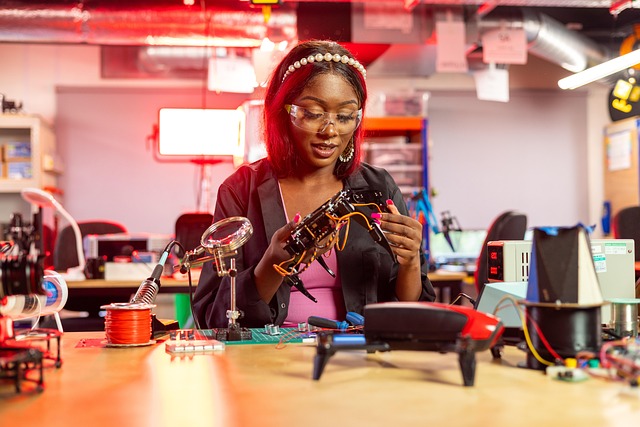Section 1: Introduction to AI Technology and Productivity
In today’s fast-paced business world, productivity is the key to success. Companies are constantly searching for ways to increase efficiency and output in order to stay ahead of the competition. One revolutionary tool that has emerged in recent years is Artificial Intelligence (AI) technology. AI has the potential to transform the workplace and boost productivity in ways that were previously unimaginable. In this article, we will explore the various ways in which AI is revolutionizing productivity in the workplace.
Section 2: Automating Mundane Tasks
One of the most significant ways in which AI is increasing productivity in the workplace is by automating mundane tasks. AI-powered software and tools can take over repetitive and time-consuming tasks, freeing up employees to focus on more important and high-value work. This not only saves time but also reduces the risk of human error. For example, AI-powered chatbots can handle customer inquiries and support, freeing up customer service representatives to handle more complex issues. This results in faster response times and improved customer satisfaction.
In addition, AI technology can also automate back-office tasks such as data entry, document processing, and payroll management. These tasks are not only tedious but also prone to human error. By automating them, companies can save time, reduce costs, and improve accuracy. This allows employees to focus on more strategic and creative tasks, ultimately leading to increased productivity.
Section 3: Predictive Analytics for Decision Making
Another way in which AI is revolutionizing productivity in the workplace is through predictive analytics. AI-powered algorithms can analyze vast amounts of data and provide valuable insights that can inform decision making. This is particularly useful for businesses that deal with large amounts of data, such as in the finance, healthcare, and retail industries.
For example, AI technology can analyze customer data to identify patterns and trends, allowing businesses to tailor their marketing strategies and improve customer retention. In the healthcare industry, AI can analyze patient data to identify potential health risks and provide personalized treatment plans. This not only improves patient outcomes but also saves time for healthcare professionals, allowing them to focus on providing quality care.
Moreover, AI-powered predictive analytics can also help businesses make more informed decisions when it comes to resource allocation. By analyzing data on sales, customer behavior, and market trends, AI can predict future demand and help companies allocate resources accordingly. This leads to more efficient use of resources and increased productivity.
Section 4: Collaboration and Communication
AI technology is also transforming the way employees collaborate and communicate in the workplace. With the rise of remote work and global teams, effective communication and collaboration have become more important than ever. AI-powered tools such as virtual assistants, chatbots, and project management software are making it easier for employees to communicate and collaborate effectively, regardless of their location.
Virtual assistants, for example, can schedule meetings, set reminders, and even take notes during meetings, freeing up time for employees to focus on their tasks. Chatbots can facilitate communication between team members and provide real-time updates on project progress. Project management software powered by AI can help teams stay organized, delegate tasks, and track progress, leading to increased efficiency and productivity.
Moreover, AI-powered tools can also facilitate communication with customers. Chatbots can handle customer inquiries and support, while virtual assistants can schedule appointments and provide information. This not only improves customer satisfaction but also saves time for employees, allowing them to focus on other important tasks.
Section 5: Conclusion
In conclusion, AI technology has the potential to revolutionize productivity in the workplace. By automating mundane tasks, providing predictive analytics for decision making, and facilitating collaboration and communication, AI is streamlining processes and allowing employees to focus on more meaningful work. As AI technology continues to advance, we can expect to see even more significant improvements in productivity in the future. Companies that embrace AI and incorporate it into their operations will have a competitive edge and be better equipped to succeed in today’s fast-paced business world.

